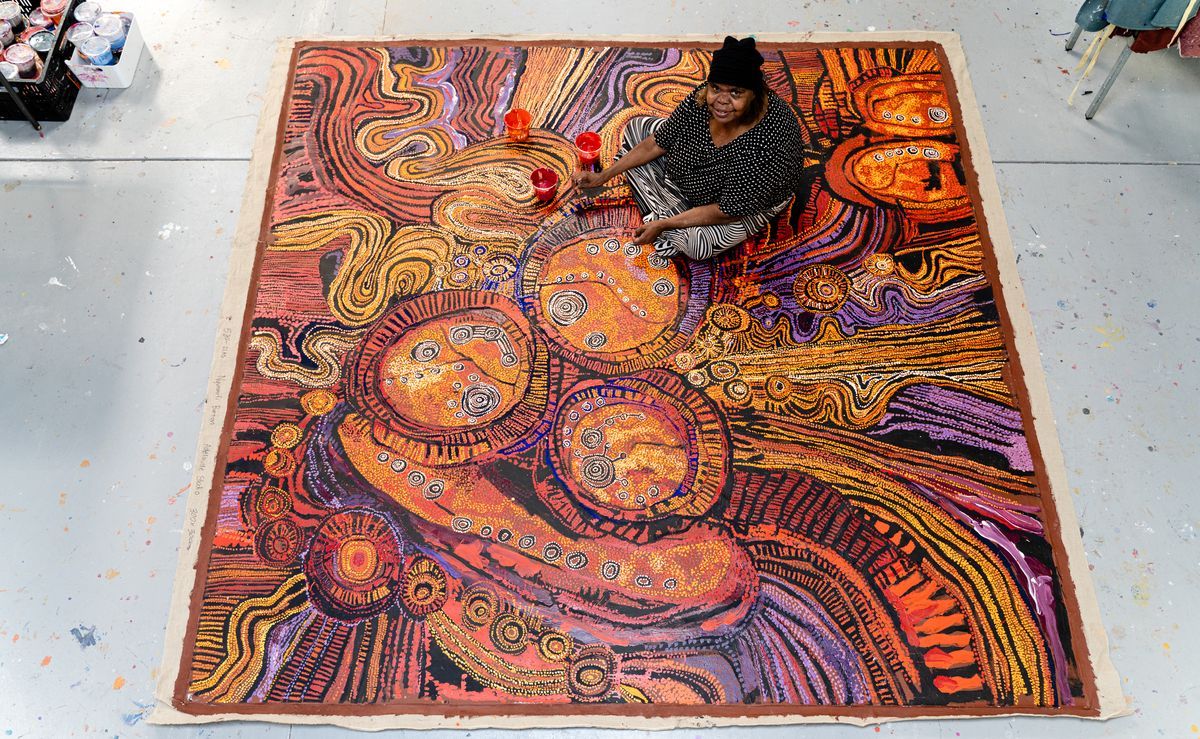The National Gallery of Australia has instigated an independent review into the authorship of an entire exhibition of Indigenous paintings, after media reports alleged that white staff members of an Aboriginal art centre had interfered in their creation.
The review was triggered by an investigation published by The Australian newspaper in early April claiming that white employees at Tjala Arts, an Indigenous-owned studio located in the Anangu Pitjantjatjara Yankunytjatjara (APY) Lands, had added paint to canvases attributed to leading Indigenous artists. Tjala Arts is part of the APY Art Centre Collective, which has denied the allegations and called them “false and seriously defamatory”.
The Australian obtained smartphone footage which appears to show a white manager at Tjala Arts painting on the canvas of the celebrated Indigenous artist Yaritji Young. The newspaper also interviewed Indigenous artists who claimed that white employees of the art centre had interfered with their work.
The National Gallery of Australia had partnered with the APY Art Centre Collective to exhibit 28 works by Anangu artists in Ngura Pulka – Epic Country, billed as “one of the largest and most significant First Nations, community-driven art projects to have ever been developed”. The show was originally scheduled to open on 3 June, but all publicity has halted pending the outcome of the review, which is expected at the end of May.
The gallery says in a statement that the review “will consider the scope and extent of contributions (if any) that third parties—and, in particular, studio assistants and managers at the APY Art Centre Collective—made to the creation of the 28 paintings that form the Ngura Pulka exhibition, with the ultimate view of assessing whether those works were made under the creative control of the artists to whom they are attributed”.
An independent panel will undertake the review. The two reviewers are Colin Golvan, a Melbourne barrister specialised in intellectual property law, and Shane Simpson, a solicitor and a recognised expert in arts, entertainment, cultural property and copyright law. They will be advised by two First Nations experts: Yhonnie Scarce, a Kokatha and Nukunu artist, and Maree Meredith, a Bidjara woman and the University of Canberra’s Pro Vice-Chancellor Indigenous Leadership.
“The panel will determine whether the paintings can properly be described as having been made under the creative control of the persons named as the artists and make recommendations to the National Gallery’s director on the findings,” the gallery says.
“These are big cultural, artistic and economic issues, and we are happy to be part of the conversation but the National Gallery is not an arbitral body,” says Nick Mitzevitch, the director of the National Gallery of Australia. “At this point, our focus is ensuring the welfare and safety of artists and seeking independent and expert assistance to assess the provenance of the 28 works on loan to the National Gallery for Ngura Pulka.”


